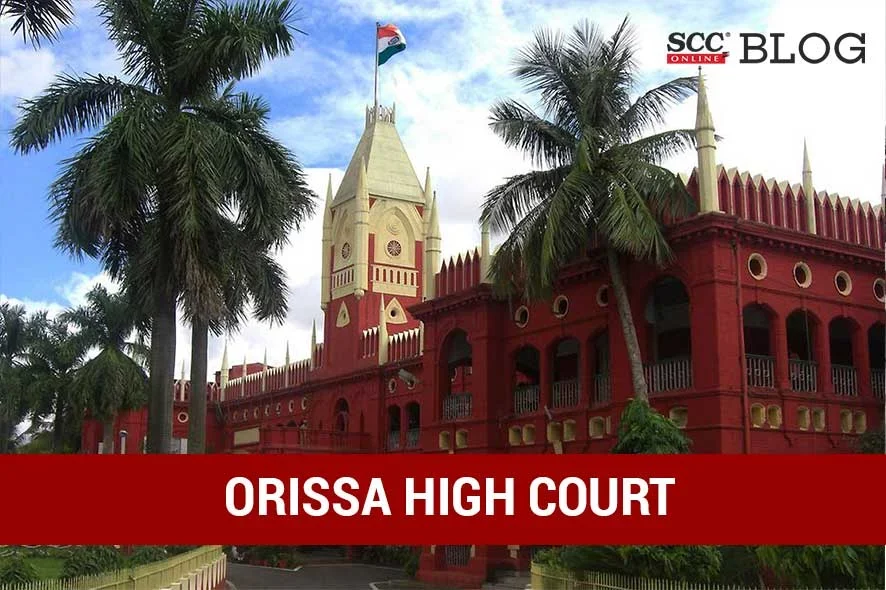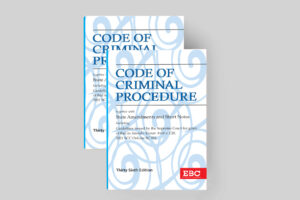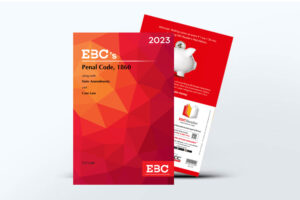Orissa High Court: In a jail criminal appeal against Trial Court’s conviction order of the convicts for offences under Section 302 read with Section 34 and Section 201 of the Penal Code, 1860 (‘IPC’), the Division bench of S.K. Sahoo and Sibo Sankar Misra, JJ. allowed the appeal and acquitted the convicts of the said charges as the prosecution had failed to bring home the evidences to establish the guilt of the convicts.
Factual Matrix
A First Information Report (‘FIR’) was registered on 24-11-2003 by the deceased’s elder brother, stating that the deceased came on a bicycle along with the convicts to his house and asked for Rs. 10 from his sister, upon refusal to give the money, he went to the neighbours house with convicts. The next day, one naked dead body was found on the railway tracks, and subsequently, a bicycle was recovered from a drainage. The informant and the neighbour went to the police station where they identified the body of the deceased. It was stated that the convicts had confessed that after consuming liquor, they murdered the deceased by strangulating his neck and laid the dead body between the railway tracks and also concealed his clothes.
The Trial Court recorded that there was no eye witness to the occurrence and the entire case was based on circumstantial evidence and found the convicts guilty of the offences under Sections 302 read with Section 201 and 34 of the IPC.
Analysis and Decision
Principles of proving a case based on circumstantial evidence
The Court checked that whether the circumstantial evidences on which the Trial Court based its decision from which the guilt was established were consistent, of conclusive nature and completed the chain of evidence. The Court referred to the ‘five golden principles’ of proof of circumstantial evidence laid down in Sharad Birdhichand Sarda v. State of Maharashtra, (1984) 4 SCC 116.
-
Last seen theory
For the last seen theory, the Court referred to Jabir v. State of Uttarakhand, 2023 SCC OnLine SC 32, wherein it was held that ‘last seen’ doctrine has a limited application and the Court should not convict an accused on the basis of the last seen circumstance. The Court said that the Trial Court’s finding that the deceased was last seen with the convicts before his death was based on assumption, which is not acceptable, as the sister of the deceased was not examined and the informant had stated that he was sleeping in other room and did not see the deceased with the convicts when he came to his house asking for money. Therefore, the Court said that the last seen evidence of the informant was not reliable. Regarding the neighbour’s evidence, the Court said that the Court noted that the neighbour had given a statement that the deceased left his house on 08-11-2023 at about 5:00 pm to go to his own house on his bicycle, however his statement was silent regarding the aspect that the convicts accompanied him.
The Court explained that the last seen theory comes into play where the time gap between the point of time when the accused and the deceased were last seen alive and the deceased was found dead is so small that possibility of any person other than the accused being the perpetrator of the crime becomes impossible. The Court said that in the present case, the places where both the convicts and deceased were last seen and where the dead body was found were completely different and there was a long time gap between the two, therefore, the Court said that the prosecution failed to successfully establish the evidence for last seen theory.
-
Extra-judicial Confession
The Court said that it is well settled that an extra judicial confession, by its very nature is rather a weak type of evidence and requires appreciation with a great deal of care and caution, as held in Balwinder Singh v. State of Punjab, 1995 Supp (4) SCC 259. The Court also referred to Sahadevan v. State of T.N., (2012) 6 SCC 403, wherein it was held that for a conviction based upon an extra-judicial confession, the Court must ensure that the same inspires confidence and is corroborated by other prosecution evidence. The Court noted that in the present case, the convicts has confessed before the informant that they had killed the deceased by pressing his neck and had laid the dead body on the railway track. The Court said that the prosecution had failed to adduce any evidence as to why the convicts would show confidence in the informant and confess before him, who is none other than the elder brother of the deceased.
Further, the Court said that the post mortem report of the deceased did not reveal ‘strangulation’ as the cause of death, as stated by the informant. Therefore, the Court said that the the cause of death as per the extra-judicial confession was contrary to the medical evidence. The Court also said that the informant’s statement before the police regarding the extra-judicial confession was not admissible as the statement recorded under Section 161 of the Code of Criminal Procedure, 1973 (‘CrPC’) is not a substantive piece of evidence and such a statement cannot be treated as evidence in criminal trial but may be used for the limited purpose of impeaching the credibility of a witness.
-
Recovery of wearing apparels of the deceased and stones
The Court said that the Investigating Officer seized the stones and wearing apparels of the deceased on the basis of the convict’s statement under Section 27 of the Evidence Act, 1872 after they were taken into custody but it seems that the seizures were made on 26-11-2003. The Court noted that the wearing apparels of the convicts did not have any blood stains or nail scrapings, therefore, the Court said that the neither the stones nor wearing apparels would be sufficient to establish the guilt of the convicts.
-
Motive
The Court said that prosecution had failed to prove any motive behind the commission of crime. Therefore, the Court said that the absence of an apparent motive was a relevant factor to be considered in favour of the convicts, particularly, when the case is based on circumstantial evidence. The Court explained that motive is an enlightening factor and has pertinent significance in a case based on circumstantial evidence.
Conclusion
On meticulous analysis of the evidence, the Court concluded that there was cogent and reliable evidence against the convicts. The Court said that the reasoning assigned by the Trial Court for conviction was based on conjecture and suspicion, which has no place in proving the guilt in a criminal trial and therefore, the Court viewed that the impugned verdict was nothing but a sheer moral conviction. The Court also said that emotions have no role to play in a criminal trial in adjudicating the guilt, which is to be established by credible evidence. The Court stated that “the crime committed may be cruel or ruthless but the evidence on record has to be evaluated dispassionately and objectively to see whether the accused is responsible for the said crime or he is innocent”.
Thus, the Court allowed the appeal and set aside the impugned order of conviction and sentence. The Court acquitted the convicts for the charges under Section 302 and 201 read with Section 34 of the IPC.
[Anil Kujur v. State of Odisha, 2023 SCC OnLine Ori 5627, Decided on 08-09-2023]
Advocates who appeared in this case :
For the convicts: Advocate Nilamadhab Bisoi
For the respondents: Additional Government Advocate Saswata Patnaik
*Deeksha Dabas, Editorial Assistant has reported this brief.








